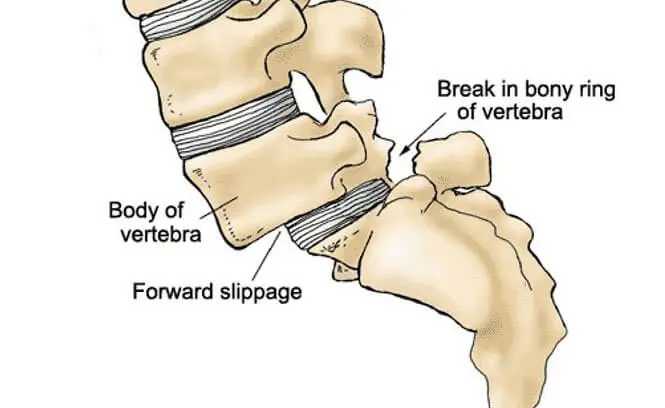What Is Spondylolisthesis?
Spondylolisthesis is a condition in which one bone in your back slides forward over the bone below it. It most often occurs in the lower spine. In some cases, this may lead to your spinal cord or nerve roots being squeezed.
Spondylolisthesis is most common in the low back but can also occur in the mid to upper back and neck. It is very common among athletes, people who are born with a defect and a people who have a history of repetitive trauma or hyperextension of the lower back or lumbar spine.
The symptoms of spondylolisthesis vary. People with mild cases may not have any symptoms. However, those with severe cases may be unable to perform daily activities.

If you think you’re experiencing symptoms of spondyloslisthesis, contact St. Louis Pain Consultants. Early treatment measures can alleviate most symptoms of this condition. We will discuss the best treatment plan to alleviate pain caused by spondyloslisthesis and get you back to your active lifestyle.
Common Spondylolisthesis Symptoms
What to Expect
We begin with a thorough clinical evaluation with an analysis of your symptoms, and physical examination. Testing may include x-rays, MRI and/or CT scans, and electro-diagnosis (EMG) to definitively pinpoint the source of pain.
Every patient is different and we work with each one to establish an individualized, comprehensive plan, to achieve maximum relief. Pinpointing the source of pain and utilizing a targeted treatment plan makes our approach highly successful.
With the help of today’s technology, our pain management specialists accurately diagnose, target, and relieve the source of pain, to help you return to an active lifestyle.
Diagnostic Options
Causes of spondylolisthesis vary based on age, heredity, and lifestyle. People of all ages are susceptible if the condition runs in the family.
Physical exams are the first step in diagnosing this condition. If you have spondylolisthesis, you may have difficulty raising your leg straight outward during simple exercises. X-rays of your lower spine are crucial for determining whether a vertebra is out of place. A more detailed CT scan may be done if the misplaced bone is pressing on your nerves.
The treatment for spondylolisthesis depends on your severity of pain and vertebra slippage. Nonsurgical treatments can help ease pain and encourage the bone to go back into place. St. Louis Pain Consultants will discuss the treatment measures to alleviate most symptoms of this condition.